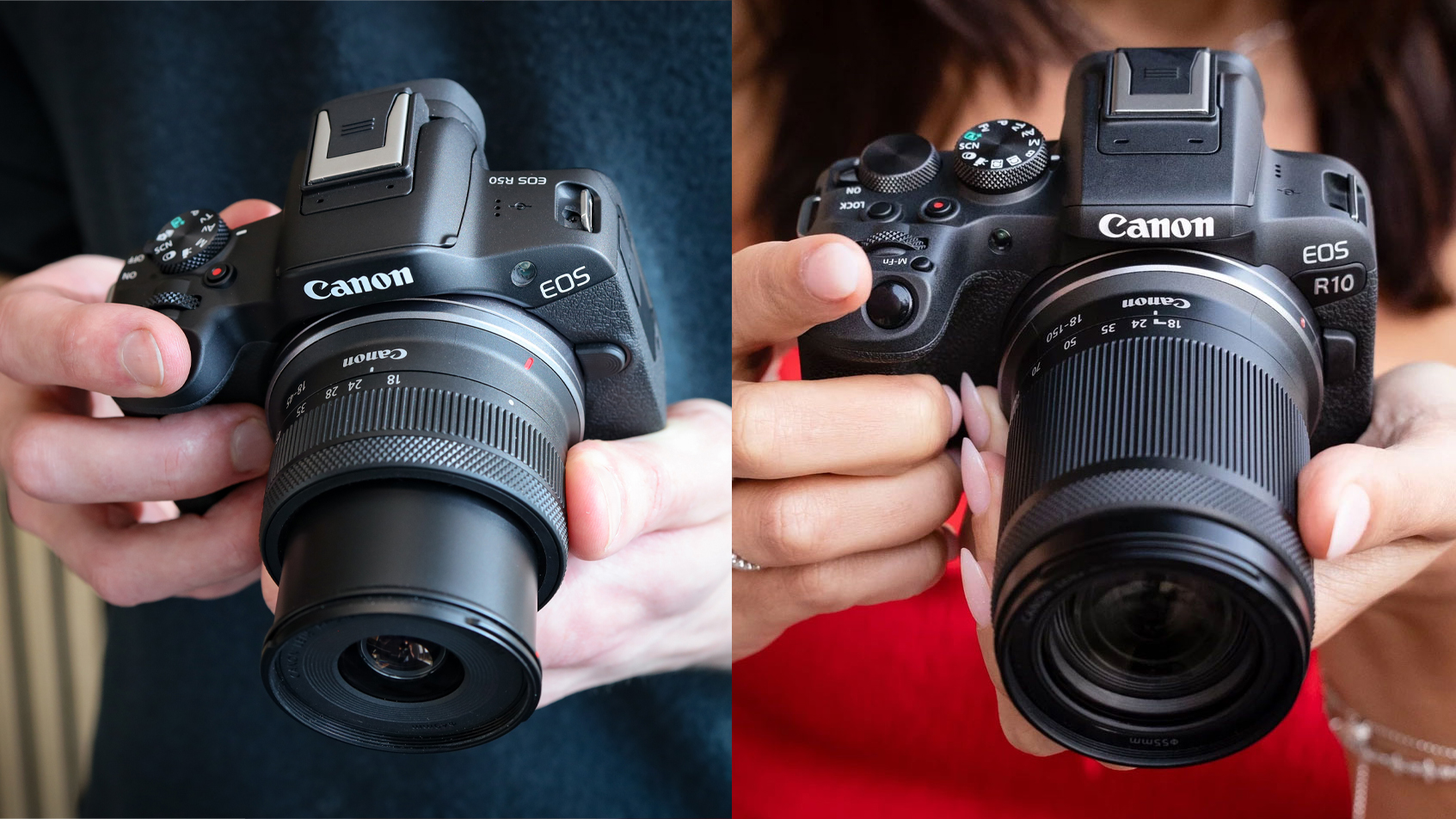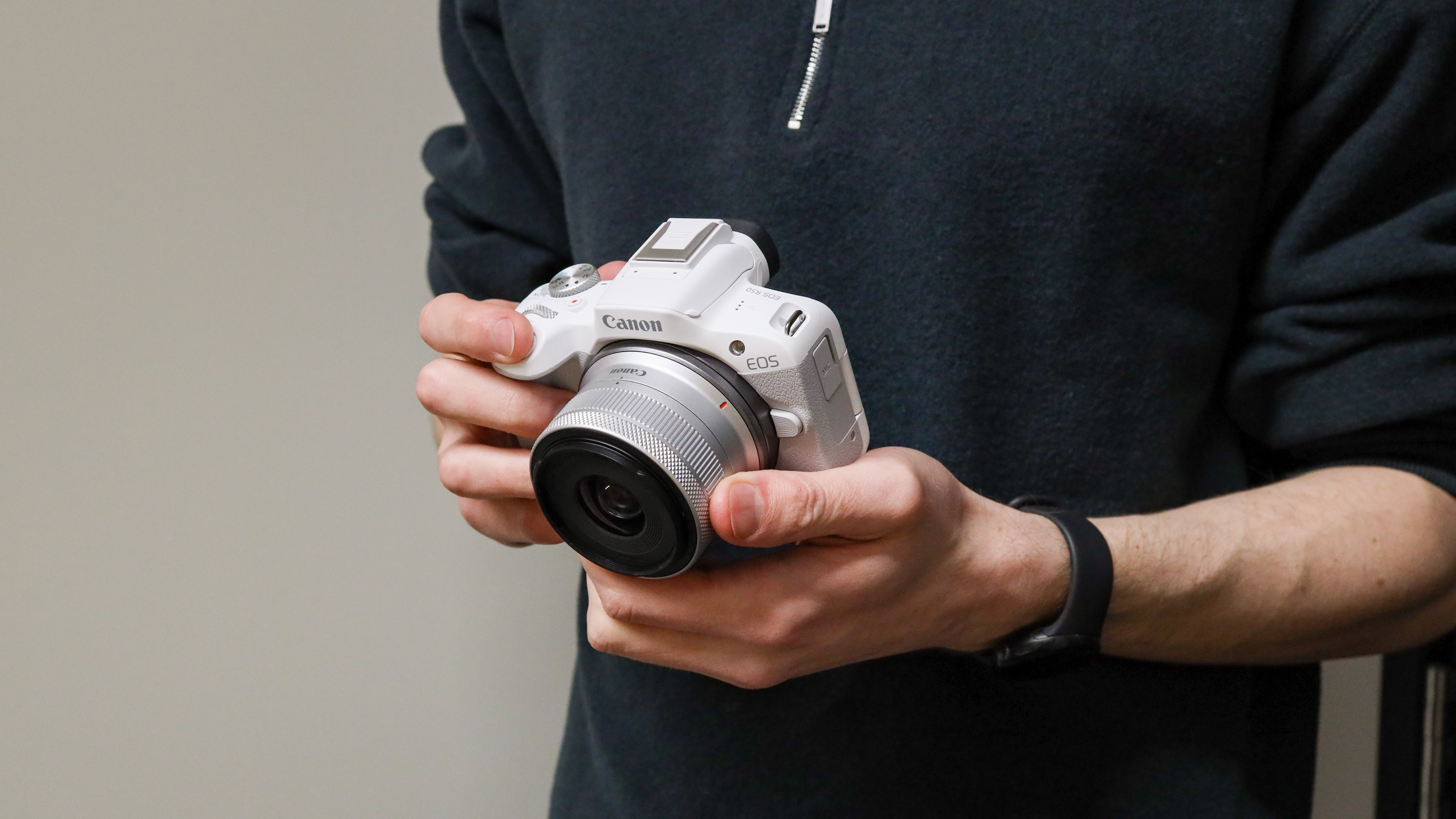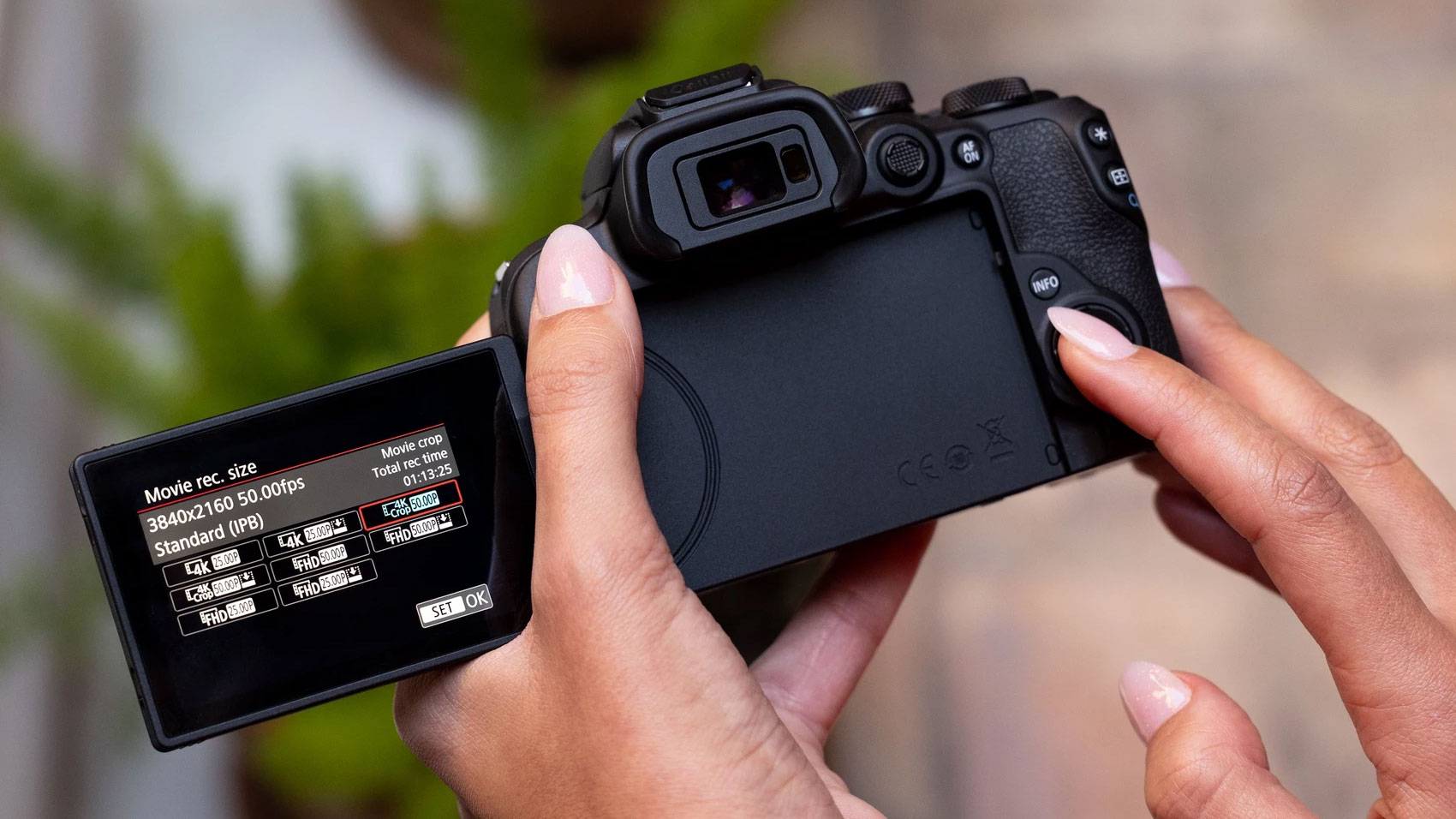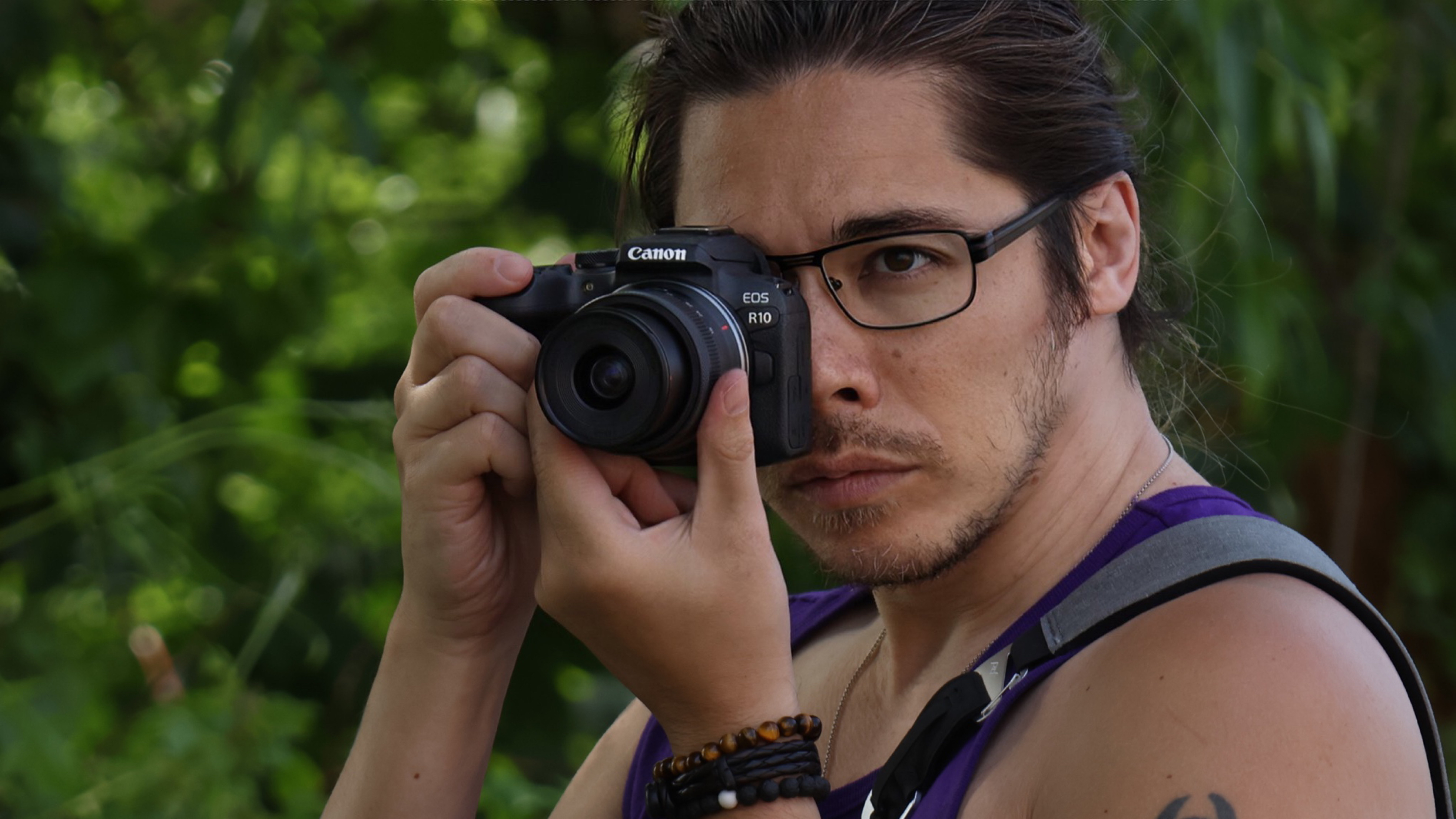
Are trying to work out what to buy between the Canon R10 vs R50? Both are brilliant APS-C cameras from Canon, with some very similar specs, so on the surface it can be hard to see what's different.
Both cameras feature an identical 24.2MP sensor, they can both capture oversampled 4K video, they both accept RF-S and RF lenses – it all looks very same same. But look closer and there are some key things setting them apart!
I've used both cameras extensively, so I've broken down the key differences between the Canon R10 vs R50 to make things clearer for you…
Canon R10 vs R50: Size

This is the biggest one: size! The Canon EOS R50 is essentially the smallest camera in Canon's lineup (being only a few millimeters apart from the tiny R100), measuring just 116.3 x 85.5 x 68.8mm and weighing 328g for the black version or 329g for the white (I guess white plastic is somehow heavier than black!). This ultra-compact camera is ideal for travel, street photography, lightweight vlogging, or anything where you want or need to stay as light and nimble as possible.
The Canon EOS R10, on the other hand, has a much chunkier body at 122.5 x 87.8 x 83.4mm and weighs in at 429g. Where the R50 is as compact as possible, the R10 is more like a full-frame camera in its size and heft – so where the R50 is better for smaller lenses and minimalist setups, the R10 is better suited for larger lenses and situations where robust handling is more important.
On the same note, there's another reason why the two bodies vary so much in size…
Canon R10 vs R50: Simplicity

The R50 manages to stay so small because it streamlines the camera operations. The button layouts and number of controls are far fewer, because the idea of this camera is to keep things as simple as possible. This makes it both more welcoming for newcomers, as well as more manageable if you want to shoot in auto or semiautomatic modes so you can just get on with shooting.
The key difference is that the R50 only has one exposure control dial (making it ideal for modes like program, aperture priority or shutter priority) and lacks a joystick. The R10, however, has dual exposure dials (making it better for fully manual control) and a joystick (for pinpoint placement of focus points, which is helpful when fast subjects like animals or sport are involved).
If you just want to shoot, with no fuss or frills, go for the R50. If you want to get creative, and take manual control, the R10 is for you.
Canon R10 vs R50: Speed

I mentioned fast-moving subjects, and this is another key area of difference. The R50 can shoot bursts of photos at up to 15fps, while the R10 offers bursts of up to 23fps – and the R10 has a much bigger buffer capacity, too, meaning it can capture more images before the memory fills up and you have to stop shooting.
While 8fps may not sound like much of a difference on paper, in real-world shooting it can be the difference between making and missing "the shot" when you're photographing things like wildlife. But obviously if you only shoot things like portraits and landscapes, it'll make little difference to you!
Canon R10 vs R50: Video

At first glance it looks like both cameras are identical for video. They both offer uncropped 4K 30p, oversampled from 6K, as well as 120p slow-motion when shooting in FullHD.
Again, though, a closer look reveals the important details! While you can record unlimited video on the R10, you're limited to recording an hour at a time on the R50. In addition, the R10 also offers a 4K 60p mode – though this does incur a 64% crop on the image.
Interestingly, because it is aimed at content creators, the R50 has a video feature that the R10 doesn't: if you hold a product or object in front of you, the R50 will focus on it until you put it down (whereupon it focuses on your face again). So if you're recording a vlog about action figures, and you hold one up, the camera knows that you're showing it off and will shift focus automatically.
This one's a bit trickier, but I'd say that if you're a solo shooter filming vlogs and creating content, the R50 is the way to go. However, if you're interested in more detailed filmmaking (with the ability to take manual control more easily, as above) then the R10 makes more sense.
Canon R10 vs R50: Price
Finally, the obvious one – price!
The R50 is the more affordable of the pair, with the R10 costing around 200 more in your local currency (though they're both about the same price in Australia right now, thanks to an offer at Amazon).
So, if price is the deciding factor then the R50 takes it – but if you need the additional functions that the R10 offers, I advise you to spend the extra cash otherwise it's false economy if the camera can't do what you want it to.
At the end of the day, though, these are both fantastic cameras and you really can't go wrong with either! Check out my full Canon EOS R50 review as well as my detailed Canon EOS R10 review to find out anything else you need to know.
See also Best lenses for Canon R50 and best lenses for Canon R10







